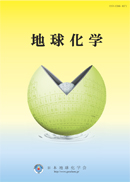All issues

Volume 13 (1979)
- Issue 2 Pages 25-
- Issue 1 Pages 1-
Volume 13, Issue 1
Displaying 1-4 of 4 articles from this issue
- |<
- <
- 1
- >
- >|
Original Papers
-
Emiko KANEKO1979Volume 13Issue 1 Pages 1-6
Published: June 30, 1979
Released on J-STAGE: November 14, 2016
JOURNAL FREE ACCESSForty groundwater samples, collected in Sendai City, were analyzed for arsenic and some other chemical constituents. The average arsenic concentration is 1.1μg/l for the samples with pH 6-7, and 12 μg/l for those with pH 7-9. Thus the pH may be a major factor leaching of arsenic adsorbed on the sediments. This has been proved by leaching experiment of arsenic-containing iron (III) hydroxide with alkaline solutions. Then a prolonged contact of the groundwater with the sediments will favor the dissolution of arsenic. The groundwaters with high iron load are often rich in arsenic, suggesting that arsenic is bound to iron in the sediments.View full abstractDownload PDF (579K) -
Katsuhiro INOUE, Shin-ichiro IWABUCHI1979Volume 13Issue 1 Pages 7-12
Published: June 30, 1979
Released on J-STAGE: November 14, 2016
JOURNAL FREE ACCESSCalcitic calcareous sinters are deposited along a dried dale near Shirataki Fall at Mt. Akita-Komagatake. The sinters contain such impression fossils as Fagus crenata Blume, Sasa kurilensis Makino et Shibata, and Prunus nipponica Matsum. They would have precipitated from low-temperature carbonated spring water gushing out at the border of the atrio, at the time of explosive activity on the southern foot of Mt. Medake in 1932.View full abstractDownload PDF (739K) -
Masami ICHIKUNI1979Volume 13Issue 1 Pages 13-17
Published: June 30, 1979
Released on J-STAGE: November 14, 2016
JOURNAL FREE ACCESSLeaf samples were taken from prince feather (Polygonum orientate L.) and a related species (Polygonum mitts Gilibert var. Nemoto) growing on the river beach of the Tamagawa River, Tokyo. Dried samples were chemically analyzed with the results shown in Table 2. A high manganese content found in some of the samples revealed the availability of the element in the swampy ground on which the plant grows. This is due to the reducing environment produced by organic matter in the sediment. Under reducing conditions, manganese is released as divalent ion and uptaken by plants. Organic matter also behaves as chelating agent toward many heavy metal ions. The leaf samples enriched in manganese often show high copper and zinc contents, thus indicating the accumulation of heavy metals in the soil. The mananese content of the plants may be useful as a geochemical indicator characterizing organic matter in the fluvial sediment and the soil.View full abstractDownload PDF (491K) -
Makoto TSURUMI1979Volume 13Issue 1 Pages 18-23
Published: June 30, 1979
Released on J-STAGE: November 14, 2016
JOURNAL FREE ACCESSAn inspection of the chemical composition of spring waters in Matsushiro, Nagano Prefecture, revealed that the Na/Mg ratio is closely related to the geographical locations of the springs. Two types of waters can be distinguished: one is magnesium-rich waters from the springs in the southeastern area, and the other, sodium-rich waters from the springs in the northwestern area of Matsushiro. The Ichiyo-kan spring, located at the boundary of the two areas, changed drastically the Na/Mg ratio before and after the swarm earthquakes, thus suggesting that the ratio can be used as an indicater of seismic activity in the area. The origin of the two types of the waters is also briefly discussed.View full abstractDownload PDF (477K)
- |<
- <
- 1
- >
- >|